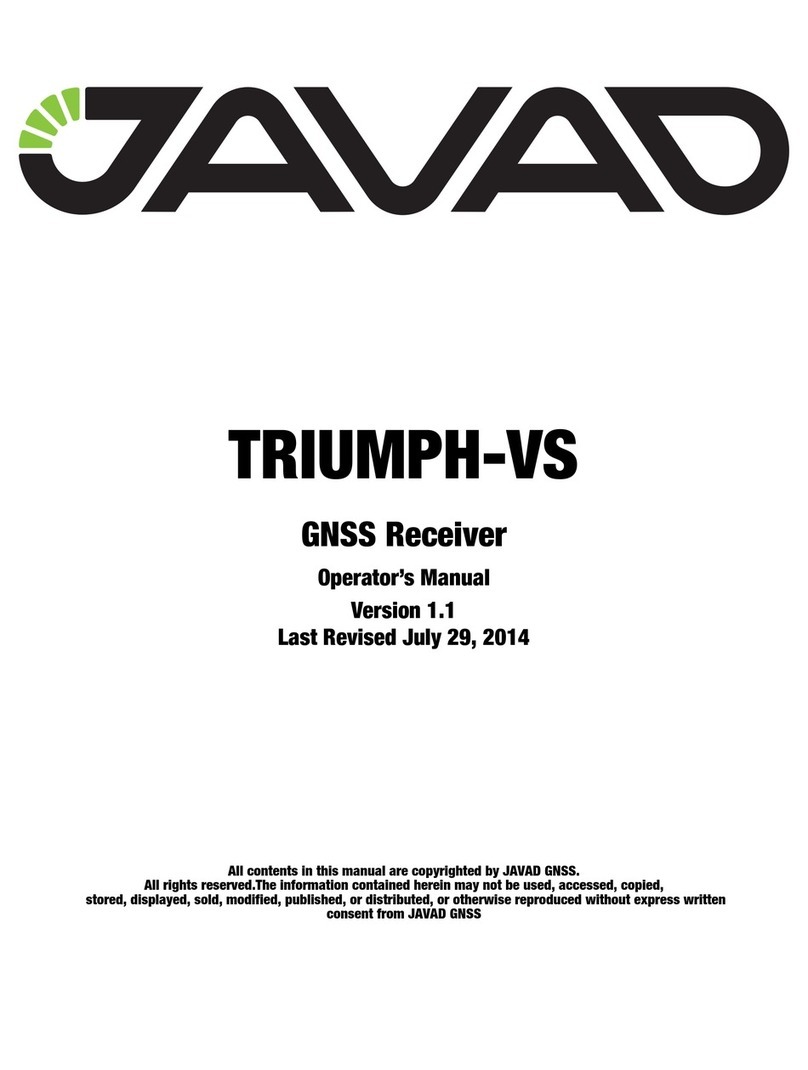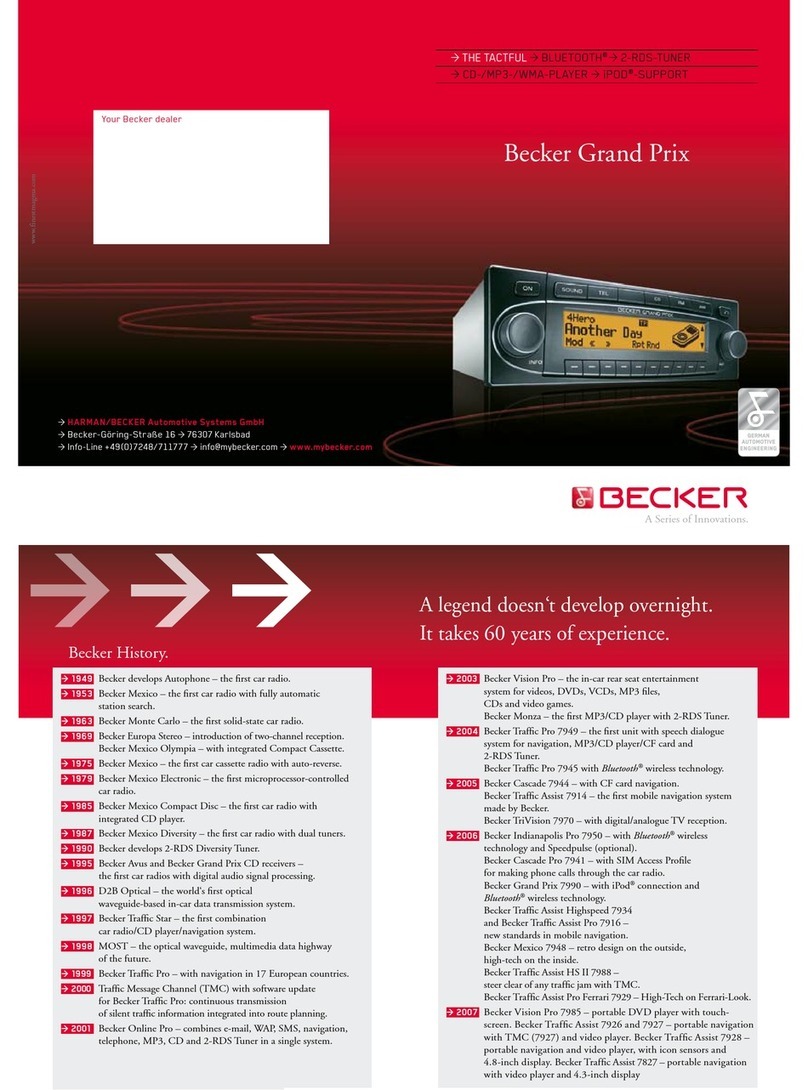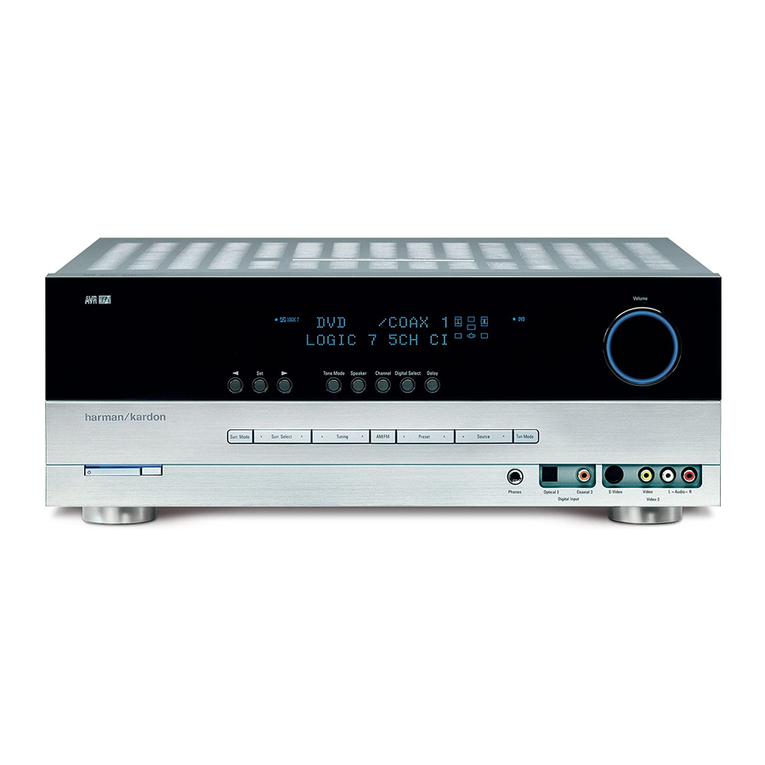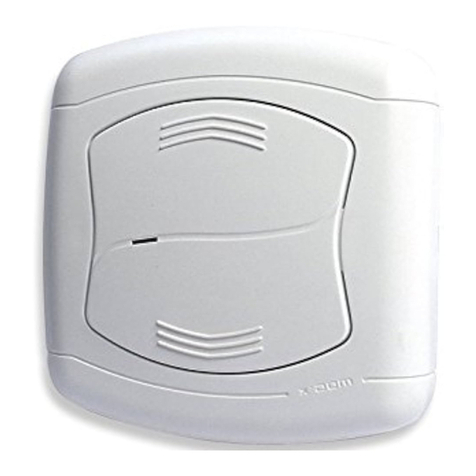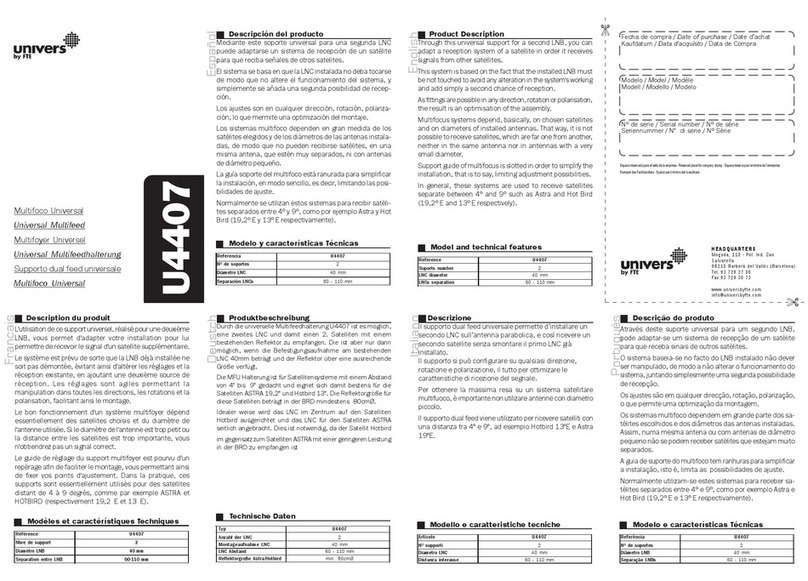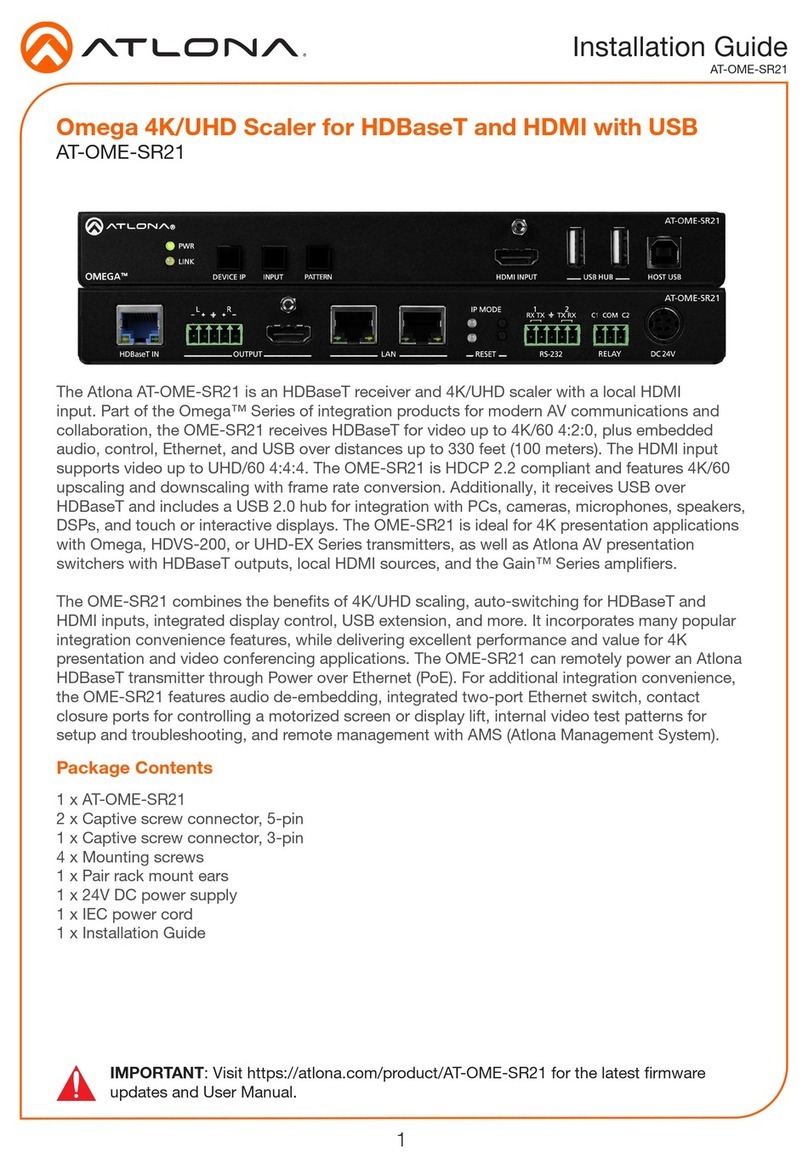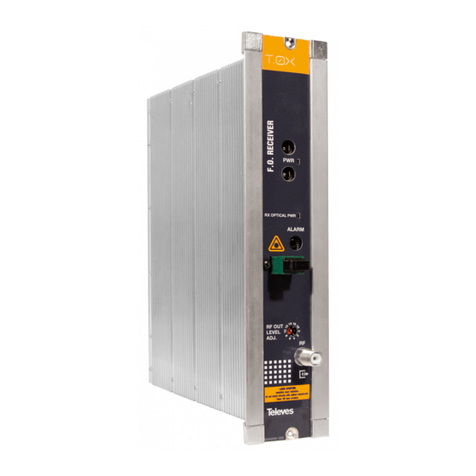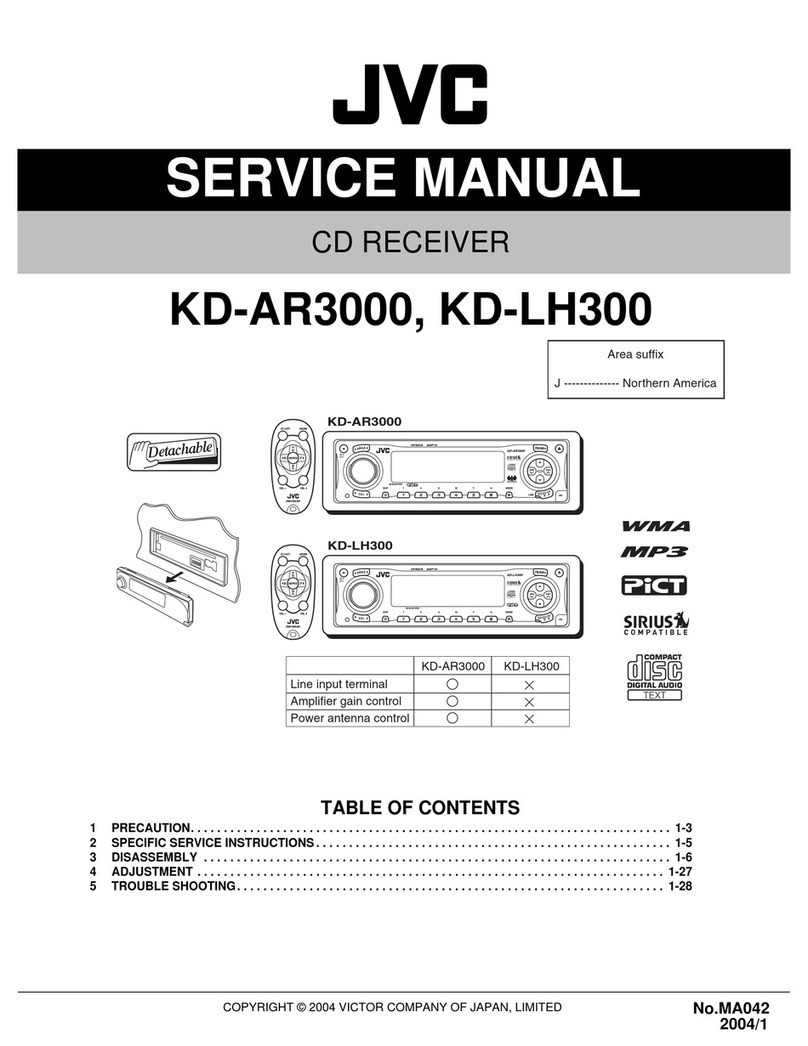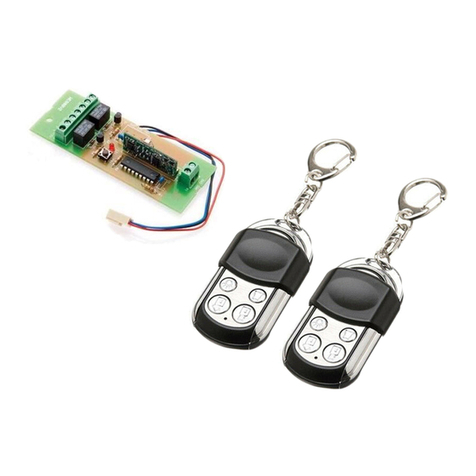Progres AgroBee-L User manual

AgroBee-L GNSS System
AgroBee-L Manual
The GNSS (Global Navigation Satellite System) is a very low consumption radio module
that is part of the AgroBee-L radio system, and that integrates a GPS-GLONASS receiver
inside it to determine the geographical position of the module in question. It also allows
the activation of latch solenoids and the reading of digital and analog sensors.
The AgroBee-L GNSS model oers the following:
Option 1
• Determination of geographic position
Option 2
• Determination of geographic position
• 2 2-wire or 3-wire latch solenoids
• 1 counter or digital input or rain gauge
• 2 4 -20mA analog sensors
The AgroBee-L GNSS module is designed to be installed on top of a post on the last tower of
the pivot, be it circular or linear. Consequently, the module allows us to locate the geographical
position of the pivot on a map and its direction of movement.
AgroBee-L GNSS

2· User’s manual | AgroBee-L
Technical characteristics
Power supply: GNSS:
Solar: 3 x 5W → 3,6V Panels plus 4000 mAh Ni-MH battery
Energy consumption: GNSS Average consumption:
90 mW
CAUTION! When handling the
battery pack, take the following
precautions: do not short-circuit,
disassemble, or deform it, do not heat
or burn it, and do not place the
battery pack near any open flame.
Power supply
When configuring an AgroBee-L GNSS module, you must enter the geographical coordinates
of the centre point of the pivot and of the starting or reference point 0°, if it is circular, as para-
meters.
If the pivot is linear, the centre point will be the le end, and the starting point will be the right
end. These coordinates are given in degrees, minutes, and seconds, and can be entered through
the Module Reader or the Agrónic to which said module is linked.
Through the parameters entered and once the module has determined its geographical
position, this GNSS module can provide us with the following values:
• Measures delivered:
‒ Angle with respect to the
starting or reference point of 0°
(clockwise)
‒ Angle respect to the initial point
or reference point of 0° (counter-
clockwise)
‒ Distance from the centre point
‒ Angle of the reference point 0°
with respect to geographic North
The AgroBee-L GNSS module has a 4 Ah internal battery and three 5 W solar panels that are
delivered along with the module.
This module is always active and collects data from the satellites it has in view. This allows it be
precise when pinpointing its position, the maximum that the system allows, about +/- 3 metres.
The navigation system’s antenna is integrated inside the module.
Option 1 (GNSS function only) does not present any kind of wiring, so, in this case, it is not
necessary to make any connections.
In Option 2, the wiring is logically necessary, since there are connections for the latch solenoids
and analog and digital sensors.

User’s manual | AgroBee-L · 3
Number 2
Type 5 Vdc or 12 Vdc (Analog
sensor power supply)
Maximum current: 50 mA
Number 2
Type 6 Vdc, 9 Vdc, 12 Vdc, 19
Vdc Trigger time: 80 ms
Capacitor charge: 4700 µF
Outputs
Maximum distance betweeen sensor and
AgroBee-L: 50m
Number 1
Type For potential-free contacts
Number 2
Type Analog (12 bits)
Inputs
Temperature -10 °C a +60 °C
Moisture < 95 %
Altitude 2000 m
Pollution Grade II
Environment
Height 460 mm
Width 295 mm
Depth 590 mm
Weight (approx.) 3,35 Kg
Box dimensions GNSS
This symbol indicates that electrical and electronic controller must not be disposed of along
with household waste at the end of its useful life. The product must be taken to the correspon-
ding collection point for the recycling and proper treatment of electrical and electronic contro-
ller in accordance with national legislation.
This system conforms with the regulations and other
regulatory documents in the following list:
Electrical
safety
UNE EN 60950-1:2007+ CORR:2007 Information technology controller.
Safety. Part I: General requirements
UNE EN 60215:1995 + A2:1995 Safety requirements for
radiotransmission controller
EMC
ETSI EN 301 489-17 v1.3.2 based on ETSI EN 301 489-1 v.1.7.1:
UNE-EN 55016-2-3:2007 Radiated radio frequency
emissions (30-1000MHz). Class B
UNE-EN 61000-4-2:1997
+ A1:1999 + A2:2001 Electrostatic discharge
UNE-EN 61000-4-3:2007 + A1:2008 Electromagnetic field immunity
UNE-EN 61000-4-4:2005 Transient/burst immunity
UNE-EN 61000-4-6:2008 Current injection: 150KHz-80MHz
Radio
spectrum
protection
ETSI EN 300 328 v1.7.1
(Decision ERC/DEC/(01)07
and Recommendation
CEPT ERC/REC 70-03)
Spurious issuer emissions Coordinator
and Module GNSS. Eective
radiated power Coordinator and
Module GNSS. Frequency dri
Coordinator and Module GNSS.
Declaration of conformity

4· User’s manual | AgroBee-L
The AgroBee-L radio modules are used for the activation of valves and other irrigation elements,
as well as the reading of sensors and meters. It is very low consumption and follows the LoRa
radio modulation, which operates in the 868MHz, 433 MHz and 915 MHz, free bands, obtaining
radio coverage of up to 2500 m between two points (depending on the orography).
AgroBee-L System Operation
Currently, they can be incorporated
into the Agrónic 2500, Agrónic 5500 and
Agrónic Bit Con fertirrigation controllers.
The AgroBee-L system consists of
a coordinator device (located in the
Agrónic 2500, Agrónic 5500 or Agrónic Bit
Con controllers) and by field elements
with dierent functions, depending
on the model in question. This system
does not include the use of repeater
elements, so all modules must connect
directly with their coordinator. The field
modules manage their consumption by
activating the communication in the
precise time of the exchange; the rest of
the time, they are asleep or attending to
irrigation control.
Its low consumption allows it to operate with a solar panel integrated into the module and
supercapacitors or battery (depending on the model). The solar panel stores the energy in the
supercapacitors/battery, oering a long operational life. It is only necessary to replace batteries
in models that include batteries instead of supercapacitors.
The maximum number of modules that an Agrónic controller can manage is 20 units in standard
mode, which can be configured as modules of any of the available types. There is also a priority
mode, which makes it possible for the modules to communicate more oen: in this case, the
number of modules (10) is halved.
To use AgroBee-L modules, it is necessary to assign their outputs to the sectors or generals of
the controller in question, and their inputs to the digital, analog, or counters sensors.

User’s manual | AgroBee-L · 5
Installation
For the supply of radio controller, it is essential to
have a coverage study. This study verifies the viability
of the system according to the profile of the terrain, the
location of the points to be controlled, and the distance
between them. The study is delivered along with the
controller oer.
AgroBee 868 MHz
ESTUDIO DE COBERTURA RADIO
SISTEMES ELECTRÒNICS PROGRÉS, S.A.
El resultado del estudio es
VIABLE
Referencia FINCA RIO GRANDE
Número de estudio
2017 - 001
Instalador AGUAS DEL NORTE
Fecha de creación
05/12/2017
Distribución
instalación
Indicaciones para su correcta instalación
Coordinador altura mínima 6m - cable subministrado 10 m
Otros módulos altura mínima 4.5m - cable subministrado 10 m
Módulo Repetidor altura mínima 6m - sin cable
Garantizar visión directa entre antenas
Comunicación indirecta del coordinador a los módulos, comunicación mediante repetidor
Coordenadas Módulos RPT-EXTERNO 38°50’42.57”N - 6°19’4.14”O
Altura
Visibilidad
Distribución directa entre antenas
The AgroBee-L system has the following features, among others:
• Operation in 868 MHz, 433 MHz and 915 MHz free bands.
• Availability of 13 communication channels plus 18 transmission modes, which allow for the
operation of more than one network in the same area working on the same channel.
• Availability of network code, which allows for filtering the information of several networks
configured with the same parameters.
• Self-adjustable communication rate according to the chosen transmission mode and the
timing mode:
‒ Timing in standard mode (60 –200”). Up to 20 modules.
‒ Timing in priority mode (30 –100”). Up to 10 modules.
• Distances of up to 2500 metres between any module and its coordinator (depending on the
orography).
• Manual actions, consultations, and configuration of the network number, channel,
transmission mode, and communication timing (standard/priority):
‒ In-situ: Through the Module Reader
‒ From a distance: Through the Agrónic
• Battery/charge level reading and solar panel (if any).
• Reading SNR level (signal-to-noise ratio) reception in the module and coordinator (in [%]).
• Reading the status of the last 16 communications and remaining time indicator until the
next communication.

6· User’s manual | AgroBee-L
MODULE INSTALLATION
3 5W
Solar panels
Support for
solar panels
AgroBee-L
GNSS Module
4 3M connectors
Screw the three solar panels
onto the panel support.
Connect the module’s
cables with those of
the panels as shown
in the figure.
IMPORTANT
Do not strip the tips
of the cables.
Place the module on top of
the support and screw it in.
1
3
2
Included material:

User’s manual | AgroBee-L · 7
The AgroBee-L GNSS module incorporates the GPS-GLONASS receiver inside it. For the correct
operation of the system and for greater precision provided by the module when determining the
geographical position, it is very important that the antenna installed in the module is as perpen-
dicular as possible to the ground.
LOCATION SENSORS
To set the cables in the connectors,
press on the blue part with pliers.
Place the whole assembly on top of
a post.
4 5
The GNSS modules have the antenna integrated into the module and in its upper part,
in order to avoid that the structure of the center does not adversely aect the perfor-
mance of the communications.
6
For the correct operation of the system and to have good radio communication, it is very
important that the GNSS module be installed on the last tower and at least 2 meters above
the Pivot metal structure. With this, a correct position reading and communication between
the GNSS module and the Coordinator are achieved.
IMPORTANT
In the event that the Pivot has sprinklers
installed directly on top of the main
pipe, the installation height of the GNSS
module must be increased enough so
that the module does not receive direct
water from the spray.

8· User’s manual | AgroBee-L
Inputs and Outputs
The trigger voltage of the solenoids (digital/latch outputs) is programmable through the Reader
or from the Agrónic, which may be 6, 9, 12 or 19 Vdc. The default voltage is 12 Vdc.
You can also choose the action that a GNSS module will perform with the digital outputs if the
communication is lost. The options are:
• Do not perform any action
• Deactivate all outputs immediately aer losing communication
• Deactivate all outputs aer about 15 minutes aer losing communication.
The GNSS model can work with two- and three-wire latch solenoids:
• 2/3 wire latch solenoids: these modules can drive up to 2 solenoids. The solenoids must be
connected as defined in the wiring table in the next section.
‘Option 1’ of said module does not include the possibility of having inputs and outputs.
‘Option 2’ includes digital outputs, digital inputs, and 4-20mA analog inputs.
DIGITAL OUTPUTS
There is 1 digital input in an AgroBee-L GNSS module, which can function either as a digital
input or a counter/rain gauge input. When the input is connected to a counter, the minimum time
between pulses must be 0.1 seconds and an anti-bounce filter may be enabled in order to avoid
accumulating undesired pulses. Maximum allowed distance between AgroBee-L module and a
digital sensor or meter is 50m.
The said input’s connection must be set according to the following section.
DIGITAL INPUTS
The module in question has up to 2 analog inputs for reading 2 4-20mA sensors. The sensors
must be connected as defined in the table in the next section.
IMPORTANT
To obtain the reading of an analog sensor through a specific “analog input” (1 or 2), the sensor
must be powered by the corresponding “sensor feed” (1 or 2). Therefore, the power supply will be
independent for each sensor.
ANALOG INPUTS

User’s manual | AgroBee-L · 9
To ensure the that the module’s
cable connections are watertight, it
is recommended to use watertight
terminals. The connection through
these terminals must be made
without stripping the cable’s wires.
AgroBee-L
GNSS
Module
Watertight
connection
terminals
Solenoid
‘Option 2’ of the GNSS model is provided with a 7-metre cable hose that allows dierent con-
nections to be made more easily without the need to access the interior of the module:
• GNSS - 12-wire tube
The cables of the dierent tubes will be identified by colours and numbers. Connect them
according to the following table and according to their functionality.
CONNECTION
GNSS (option 2)
Wire colour Function 1
(latch 2 hilos)
Function 2
(latch 3 hilos)
White R1
Brown R2
Green Common (CR-2F) Common Stop (CP)
Yellow - Common Activate (CM)
Grey Digital Input 1 (D1)
Pink Common Digital Input 1 (CD)
Blue Analog input sensor 1 (A1)
Red Common Power Sensors (CA1)
Black Power supply sensor 1 (+V1)
Purple Analog input sensor 2 (A2)
Grey-pink Common Power Sensors (CA2)
Red-blue Power supply sensor 2 (+V2)

10 · User’s manual | AgroBee-L
Settings
For any AgroBee-L module to enter the correct operating mode, you must have an Agrónic
controller (Agrónic 2500, Agrónic 5500 and Agrónic Bit Con) with the AgroBee-L option installed,
which includes the internal coordinator and an antenna with 10 metres of cable. This can be
verified by doing the following in the controller:
Consult Communication AgroBee-L Status: Correct
In the same way, a module must be configured to
communicate with the Agrónic with which you want to
associate it. To do this (if the module is not already confi-
gured at the factory) you must use the Module Reader (or
Agronic Radio Reader, LAR) consisting of a screen and four
keys, that is connected to the AgroBee-L module through
the only connector visible on the inside.
A wireless module reader is also available that allows you
to perform functions without the need for a cable. Consult
the wireless AgroBee Reader manual to learn about the
steps to link it to the controller.
Press the key to enter the main menu. Use the and keys to change the options
within the menu. Use the key to enter the selected menu option. Use the key to return
to the previous hierarchy’s menu.
You will see the following options in the main menu:
• Consult controller
• Consult communications
• Consult digital output
• Consult digital and analog inputs
• Communication parameters
• Input-Output parameters
• Output manual
• Sectors manual
• Various parameters
Once the AgroBee-L module is linked with an Agrónic, all the consultations and
parameters are accessible through the Agrónic.
NOTE
+
-
cc

User’s manual | AgroBee-L · 11
Communication consultation menu of the module, where the following parameters are
displayed:
• Transceiver: Type of emitter installed in the module. It tells you if the module works at
868MHz/433MHz or 915MHz
‒ RN2483 (868MHz/433MHz)
‒ RN2903 (915MHz)
• Band and transmission mode:
‒ Band: 868MHz, 433MHz, 915MHz
‒ Transmission Mode: 1 to 18 (mode 5 will be set by default)
• Consult parameters of the communication type:
‒ Channel: 1 to 13
‒ Network code: It is usually the associated Agrónic serial number
‒ BW: Bandwidth of the radio modulation (125KHz, 250KHz, 500KHz). It is set according to
the transmission mode chosen in the communication parameters.
‒ Radio modulation factor: SF7, SF8,…, SF12. It is set according to the transmission mode
chosen in the communication parameters.
‒ Communication status:
∙ Status message:
- Correct Communication
- Network error
CONSULT COMMUNICATIONS IN AN AGROBEEL MODULE
General query menu of the module, where the following parameters are displayed:
• Module and serial number:
‒ Module: It refers to the module number (1 to 20) according to the established
communication parameters. There can only be one same module number for each
Agrónic.
‒ Serial number: Information regarding the controller. It comes from the factory.
• Battery voltage and solar panel:
‒ Vbat: Battery voltage:
∙ Panel+Supercapacitors: Maximum value: 3.4V; Minimum value: 2.2V
∙ Panel+Battery: Maximum value: 4.2V; Minimum value 3.4V
‒ Vsol: Voltage of the solar panel
These same data can be viewed in the Agrónic by accessing “Consult - Communications -
AgroBee,” as you will see in the next section.
CONTROLLER QUERY OF AN AGROBEEL MODULE

12 · User’s manual | AgroBee-L
- Communication error
- Model error
- Does not communicate
∙ Signal-Noise ratio of the last received message: Reliable communication if >40%.
‒ Time until next radio emission: time in [s]
‒ Status of the last 16 communications (the previous communications appear on the right
side of the screen):
∙ 1: It indicates that the emission has been made and the correct information received in
the last communication
∙ 0: Indicates that the radio emission has been made, but the correct data has not been
received or no data has been received
Part of this information is available through the Agrónic by accessing “Consultation | Commu-
nications | AgroBee”, where you can also see the query regarding the controller and the parame-
ters of the communication.
Menu that shows the status of each of the outputs, one by one.
The states that can be shown for each digital latch output are the following:
• Activated
• Stopped
• Latch tension load (running)
• Latch tension load (stopped)
• Running time
• Stopped time
The status of the digital outputs (latch) can also be displayed through the Agrónic: see the next
section.
CONSULT THE AGROBEEL MODULE DIGITAL OUTPUTS
CONSULT COMMUNICATIONS
AgroBee-L 868
Status: Correct
Timing: 60”
Channel: 01 TX Mode: 05
Network code: 00001
CONSULT COMMUNICATIONS
M01 (ns. 236) V1.00
Status: Correct (40”)
Level: 80% / 82%
Vbat: 04.0 V Vsol: 05.8 V
1111111111111111

User’s manual | AgroBee-L · 13
Menu to check the status of digital inputs, counters, and GNSS inputs.
The information shown on the dierent screens is as follows:
• Consult the geographic coordinates of the GNSS module position:
‒ Latitude (In xxº yy’ zz.zz” N/S format) of the current position
‒ Longitude (In xxº yy’ zz.zz” E/W format) of the current position
‒ Angle (“ANG. H”) of the current position with respect to the initial (0º) and central
position defined in the parameters: clockwise angle
‒ Angle (“ANG-Z-N”) of the initial position defined in parameters relative to geographic
North
‒ Distance from the current point to the point defined as the centre
‒ Number of satellites currently being viewed by the GNSS receiver incorporated into the
module.
‒ State the measured position. If F is ‘YES’, the GNSS receiver is fixed and the measurement
of the position is correctly displayed. If F is ‘NO’, it indicates that the GNSS receiver
cannot determine the position.
• Consult digital inputs: For each of the digital inputs available to the module in question, its
status is shown either as ‘0’ (open contact) or ‘1’ (closed contact)
• See accumulated counter sensors: The total number of pulses detected will be displayed for
each digital input configured as a counter sensor. If this entry is not configured as a counter,
the text ‘N-A’ (Not-Activated) will appear.
• See instant flow rate (time between pulses): The time in [ms] between the last 2 pulses
detected will be displayed for each digital input that is configured as a counter sensor. If this
entry is not configured as a counter, the text ‘N-A’ (Not-Activated) will appear.
• Consult analog inputs: For each of the available analog inputs, the value read is displayed
and expressed in [mA] or [V] according to the type of input in question. Likewise, the value
in the format in which the Agrónic receives it (800-4000mV) is shown in parentheses. If the
analog input in question is not configured, the text ‘N-A’ (Not-Activated) will appear.
• Check the supply voltage of the analog sensors: The value of the supply voltage sent to the
active analog sensors is displayed in [mV].
From the Agrónic, press the ‘1’ key in the module’s consultation screen on the Agrónic to view
the analog/digital values of the GNSS inputs.
Nomenclature used in these consultations:
CONSULT THE AGROBEEL MODULE DIGITAL AND ANALOG INPUTS

14 · User’s manual | AgroBee-L
AgroBee-L 15 GNSS
Angle: 333.2º Dist.: 248.8 m
Angle N.: 55.1º Status: 1
Satellites: 9
Lat.: 041º 37’ 46.08” North
Lon.: 001º 00’ 23.81” East
AgroBee-L 15 GNSS
EA1: 963
EA2: 11963
ED: 1
SD: 01
• Angle Angle of the current position with respect to the initial (0º) and central position
defined in the parameters. Clockwise angle
• Dist. Distance from the current point to the point defined as the centre
• Angle N. Angle of the initial position defined in parameters relative to geographic North
• Status If it is ‘YES’, the GNSS receiver is fixed and the measurement of the position is
correctly displayed. If it is ‘0’, it indicates that the GNSS receiver cannot determine the
position
• Satelites Number of satellites in the constellation currently being viewed by the GNSS
receiver incorporated into the module
• Lat Latitude of the actual position of the module
• Lon Longitude of the actual position of the module
• EA analog input values in [mV] and 4-20mA format: 4mA=800mV and 20mA=4000mV. The
number next to EA indicates the sensor number.
• ED status of digital input. With a ‘1’ indicating that the contact is closed and a ‘0,’ that it is
open.
• SD status of digital outputs (latch valves). With a ‘1’ indicating that the valve is open and a
‘0,’ that it is closed. The digit on the far right corresponds to output 1.
La primera pantalla muestra un ejemplo de lo que podemos visualizar. Y si pulsamos ‘1’ de
nuevo, veremos la segunda pantalla.
From the controller, you can define a series of sensors, indicated in this table:
01 Angle respective to the initial point (clockwise) From 0.0 to 359.9º
02 Distance from the starting point. From 0.0 to 3200.0 metres
03 Angle of the initial point respective to geographic north From 0.0 to 359.9º
04 Angle respect to the initial point (counter-clockwise) From 0.0 to 359.9º
05 Analog sensor reader 4-20mA S1 Depending on the sensor
06 Analog sensor reader 4-20mA S2 Depending on the sensor
Sensors (analog inputs)
No. Description Units

User’s manual | AgroBee-L · 15
For an AgroBee-L module to establish communication
with a certain Agrónic, you must set, through the reader,
the parameters that have just been described, according
to those established in the Agrónic in question. In the
Agrónic, you can modify these parameters in ‘Parameters
| Installer | Communications | AgroBee | Coordinator’:
AgroBee-L
Channel: 01
Network code: 00001
Timing: standard
Band: 868MHz
TX Mode: 05
The following parameters are in the Communication Parameters menu of the Module Reader,
which allow you to establish the communication of a certain AgroBee-L module with a controller:
• Module Module number in the network. It is used to distinguish all modules that may be
associated with an Agrónic. The module number cannot be repeated in the same Agrónic:
‒ 1 to 20 (timing in normal mode)
‒ 1 to 10 (timing in priority mode)
• Band Frequency Band:
‒ 868MHz or 915MHz (default value, depending on the model)
‒ 433MHz (only available in models that also support 868MHz band)
• Channel Frequency channel number:
‒ 1 to 13 (independent from the band used)
• TX Mode Transmission method. Set the radio’s transmission and reception parameters.
‒ 1 to 18 (mode 5 set by default):
∙ Mode 1: The shortest coverage length permitting the lowest lag time
∙ Mode 18: The greatest coverage length, but with the most lag time
• Timing 2 timing modes:
‒ Normal mode (recommended): It is automatically set according to the chosen
transmission mode, but always includes the communication of up to 20 modules. Value
between 60” and 200”.
‒ Priority mode: It is automatically set according to the chosen transmission mode and
includes the communication of up to 10 modules. Value between 30” and 100”.
• Network code It dierentiates the information from several controllers with the same
communication parameters (band, channel, and transmission mode). The Agrónic serial
number is assigned by default.
COMMUNICATION PARAMETERS OF AN AGROBEEL MODULE
To modify any of the sub-menu’s fields, press . The screen will display that you are in edit
mode. Use the and keys to set the desired value. Confirm with or dismiss with .
Press to exit the menu and access the previous hierarchy’s menu, which will change the para-
meters and let them take eect.
+
-cc
cc

16 · User’s manual | AgroBee-L
In the Input-Output Parameters menu of the Module Reader, you can set the parameters of
the AgroBee-L module’s dierent inputs and outputs, available through the following sub-menu:
• Coordinates Allows you to specify the central point coordinates and the 0° point of a pivot:
‒ Lat. Central: Latitude of the central pivot point in xxº yy‘ zz.zz“ N/S format
‒ Lon. Central: Longitude of the central pivot point in xxº yy‘ zz.zz“ E/W format
‒ Lat. Initial: Latitude of the pivot’s initial 0° point in xxº yy‘ zz.zz“ N/S format
‒ Lon. Initial: Longitude of the pivot’s initial 0° point in xxº yy‘ zz.zz“ E/W format
• Digital Inputs Configuration of digital sensors or counters.
‒ Configuration of functions of each of the available digital inputs:
∙ Digital input
∙ Counter
‒ Anti-bounce filter: only applicable when digital input is setup as counter. A filter time
between 0.0” and 10.0” can be fixed, and it represents the minimum time that a contact
must be closed to count a new pulse. Same time is considered for all the inputs of the
module. This filter time can only be setup by using the Module Reader (it cannot be setup
from the programmer to which this module is linked).
• Digital Outputs Configuration of latch outputs:
‒ Latch trigger voltage: 6V, 9V, 12V (default), 19V
‒ Latch valve: 2 wires, 2 wires-inverted (default), 3 wires
‒ Firing time: 31.25 ms, 62.5 ms, 93.75 ms (default)
• Analog Inputs Configuration of the measurement of analog input parameters. You will have
the following options for each of the available inputs:
‒ Active / Non-Active Input
‒ Reading rate: 5min (default), 10min, 20min
‒ Sensor’s power supply: 5V, 12V (default)
‒ Timing of the sensor’s power supply: 250ms default, 500ms, 1s, 2s
• General Parameters It allows you to establish the last output of the module as a general
output of the module itself. This output will be activated whenever any of the other outputs
of the module is activated. There is a configurable hammer, from 1” to 250”, between the
activation of the generals and the sector. First activate the sector, and then the generals:
‒ General module YES or NO (by default, NO).
‒ Stop-Sector: YES or NO (by default, NO). Action to be taken when there is a general
module command and the module receives the order for the last active sector:
∙YES: First for the general, and then the sector aer the seconds set
∙NO: First for the sector, and then the general aer the seconds set
• Action Error indicates what action the module will take with the digital outputs when the
radio communication between the module and Agrónic fails:
INPUTOUTPUT PARAMETERS OF AN AGROBEEL MODULE

User’s manual | AgroBee-L · 17
AgroBee-L 15
Pivot type: circular
AgroBee-L 15
Sensor 1 Activate: yes
Timing: 5’
Voltage: 12 Vdc
Voltage time: 250 ms
AgroBee-L 15
Latch tension: 12 Vdc
Latch valve: 2 wires
AgroBee-L 15
Central point
Latitude
041 º 37 ‘ 39.06 “ North
Longitude
001 º 00 ‘ 20.24 “ East
AgroBee-L 15
Sensor 2 Activate: yes
Timing: 5’
Voltage: 12 Vdc
Voltage time: 250 ms
AgroBee-L 15
Initial point
Latitude
041 º 37 ‘ 43.23 “ North
Longitude
001 º 00 ‘ 28.24 “ East
AgroBee-L 15
Action error: Nothing
General module: no
Stop sectors: no
IMPORTANT
The detailed input/output parameters can also be entered in the Agrónic. In this case, the
module will receive the parameters upon communicating with it. If not, and these parameters
have been changed through the Module Reader in the same module, the Agrónic will receive and
update said parameters.
To modify these parameters from the Agrónic, you must access “Parameters – Installer –
Communications – AgroBee – Module.” Specify the module number in the Agrónic network in
question, aer which you will see the following screens to modify the detailed parameters (see
the Agrónic manual in question for more details).
‒ It does not close: the output state remains as it is
‒ Close immediately: all outputs close immediately upon losing communication with the
Agrónic
‒ Close 15 min: all outputs close aer 15 minutes of the module being unable to
communicate with the Agrónic.
To modify any of the sub-menu’s fields, press . The screen will display that you are in edit
mode. Use the and keys to set the desired value. Confirm with or dismiss with
. Press to exit the menu and access the previous hierarchy’s menu, which will change the para-
meters and let them take eect.
+
-cc
cc

18 · User’s manual | AgroBee-L
You have already seen how to consult the dierent parameters of an AgroBee-L module through
the Module Reader. In the Agronic to which the AgroBee-L module is associated, it also shows the
battery information and radio link performance of said module.
The information provided is:
• Module number, serial number, and firmware version
• Signal level received by the Agrónic and the module. It is displayed in % and indicates the
level of the signal-to-noise ratio.
• Advisable/recommended value > 40%
• Vbat: Battery level in mV:
‒ Module with panel + supercapacitors: VBat max = 3.4 V; VBat min = 2.2 V.
• VSol: Voltage level delivered by the solar panel.
Battery levels and radio signal/quality
Consultation Communications AgroBee-L
(down and up arrow to go through the dierent modules)
AGROBEEL MODULE MANUAL OUTPUTS
In this sub-menu, you can carry out the start and stop actions of the dierent outputs without
accounting for the timings of the sectors that may be defined. The following options are available:
• Output Test: starts/stops all of the module’s outputs. It cannot be carried out if any of the
outputs is active at the time of the test.
• Start/Stop each of the outputs individually. It cannot be carried out if the specific output is
active at the time of the test.
From the reader, you cannot leave this menu if all of the outputs have not been stopped.
If, in this menu, the module reader is disconnected, all outputs will be deactivated immediately.
These same actions can be carried out from the corresponding Agrónic menu: in this case, it
must be taken into account that said action will not be carried out until the module communi-
cates with the Agrónic.
VARIOUS PARAMETERS OF AN AGROBEEL MODULE
In the Various Parameters menu of the Module Reader, you can select the language among
Spanish, Catalan, English, French, Italian, and Portuguese.
From this menu, you can also can completely erase the module’s data, restoring it to factory
settings, maintaining the serial number and the model.

User’s manual | AgroBee-L · 19
Updating the AgroBee-L module software
Whenever there is a new soware version for an AgroBee-L module, the user can update it. To
do this, you must perform the following steps:
• Have a computer with an Internet connection and a USB to miniUSB cable.
• Download the program “AgronicUpg” + “drivers” + update file (dfu) by typing this address bit.
ly/actualizaragronic into the computer’s browser.
• Select and download the AgroBee-L folder.
• Go to the module and turn it o using the switch.
• Place the other switch inside the module in the recording position (by default, it is in the
‘Normal’ position).
• Connect the USB to the computer and the miniUSB to the module.
• Start up the module using the ON/OFF switch.
If a module does not find the Agronic with which it communicates, said module will follow its
own course, and will send data every certain time, according to the established timing. However,
in order to avoid possible collisions and/or interferences, the module will slightly oset the
pre-established communication time. The consumption of an AgroBee-L module is practically
unchanged due to the fact that it is not connected to any Agrónic.
TURNING OFF THE CONTROLLER
(1): The duration of the battery with its maximum charge and without recharging. This case can occur when the solar panel
does not recharge the battery (with clouds or fog).
Battery life with standard communication rate mode 5: 60 seconds
Type GNSS
Panel + Battery 4000mAh Ni-MH(1) < 3 days
Estimated battery life
Battery life is approximate since there are several factors that can aect consumption. Frequent
reading of digital sensors (when counters are configured) shortens the duration. Likewise, if a
priority mode rate is set, the battery life will decrease.
Conversely, for the H2O model, if a higher sensor reading rate is selected, the battery life will
increase.
Battery replacement you do not need to replace any battery in any case, since the power
supply of the modules is based on a system of supercapacitors.

Mini USB
Normal
Record
Switch ON
OFF
R-2171-3
Polígon Industrial, C/ de la Coma, 2 | 25243 El Palau d’Anglesola | Lleida | España
Sistemes Electrònics Progrés, S.A.
• On the computer, run the program “AgronicUpg”.
If you do not see the “Internal Flash” line on the
screen as seen in the image, you must install the
drivers. If you already have the drivers installed,
skip to the next step.
• To install the drivers, go to the files you
have downloaded and select the folder that
corresponds to your Windows version. Run the
file “dpinst_” and follow the steps. If you use Windows XP, call Progrés to help you with the
installation.
• Press the “Choose file” button and select the file “xxx.dfu”. Once loaded, press the “Update”
button and wait for the process to finish.
• Once the process is finished, the module is updated.
• To finish, turn o the module, disconnect the miniUSB cable, and place the second switch in
the ‘Normal’ position.
• Finally, the module can be started up again.
Other manuals for AgroBee-L
1
Table of contents
Popular Receiver manuals by other brands

RODE Microphones
RODE Microphones Wireless PRO quick start guide
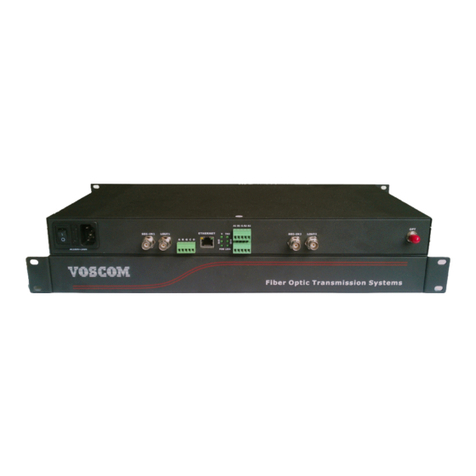
Voscom
Voscom VOS-1DH3G-ADCEMT installation manual

Ramsey Electronics
Ramsey Electronics HR-80 instruction manual

DP Audio Video
DP Audio Video DZP914 user manual

Controlaire
Controlaire SH-100 operating instructions
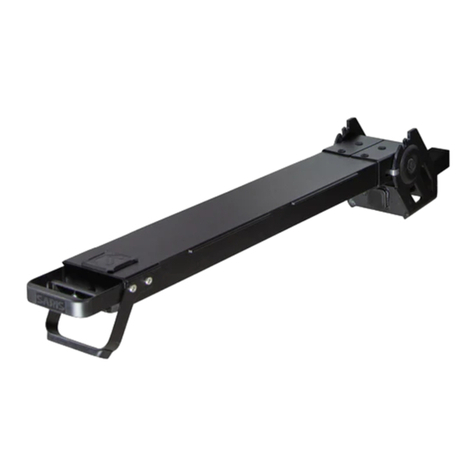
Saris
Saris 4630 Assembly instructions

